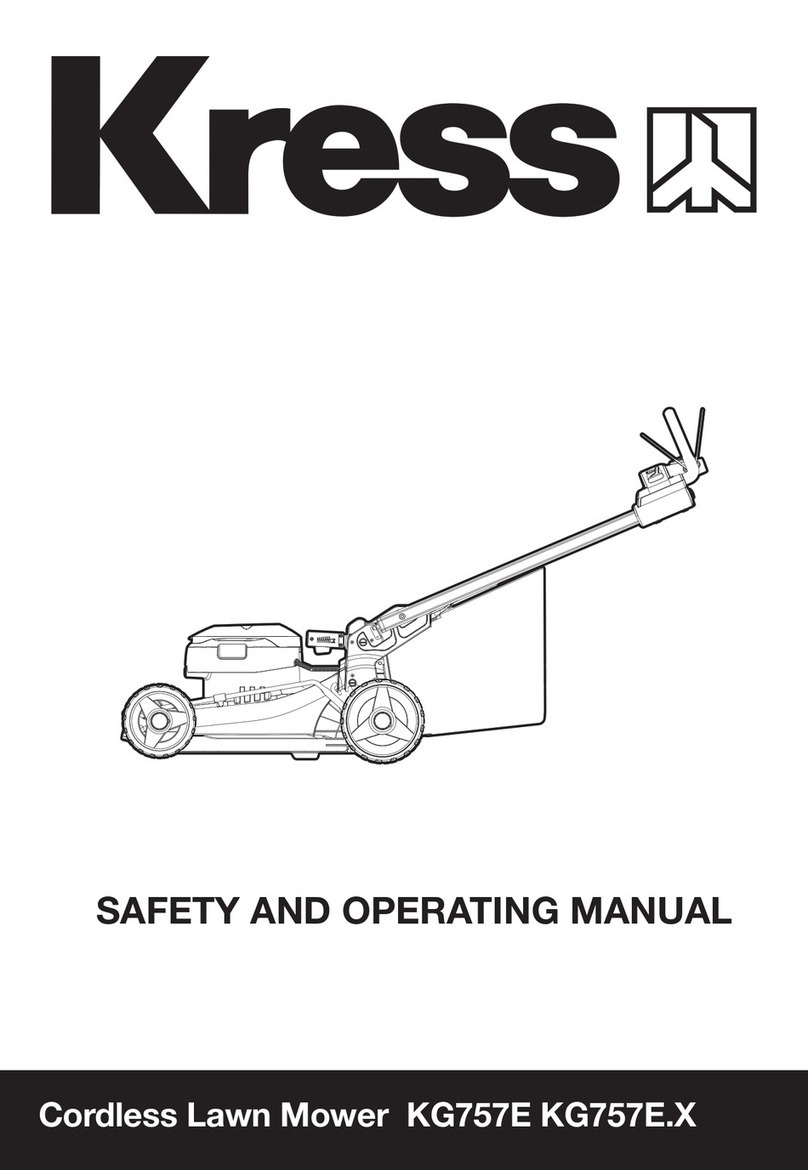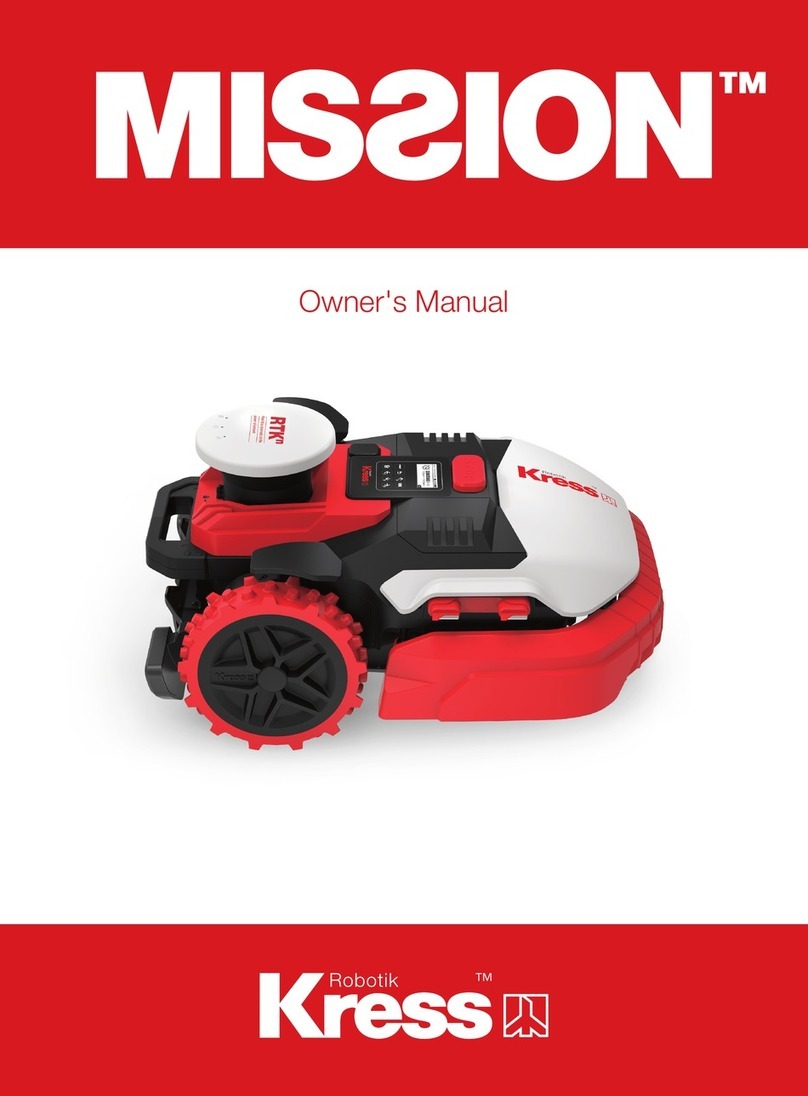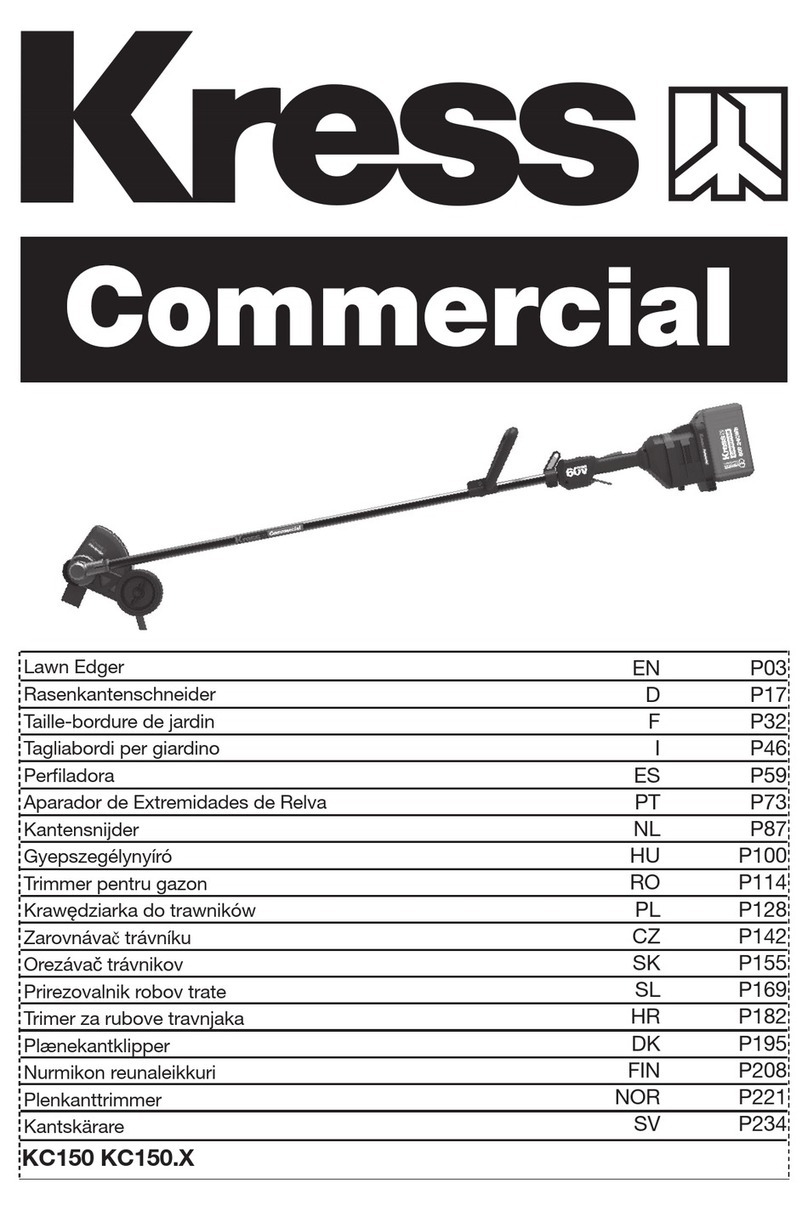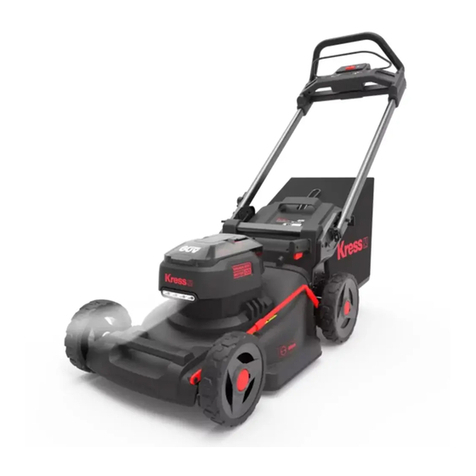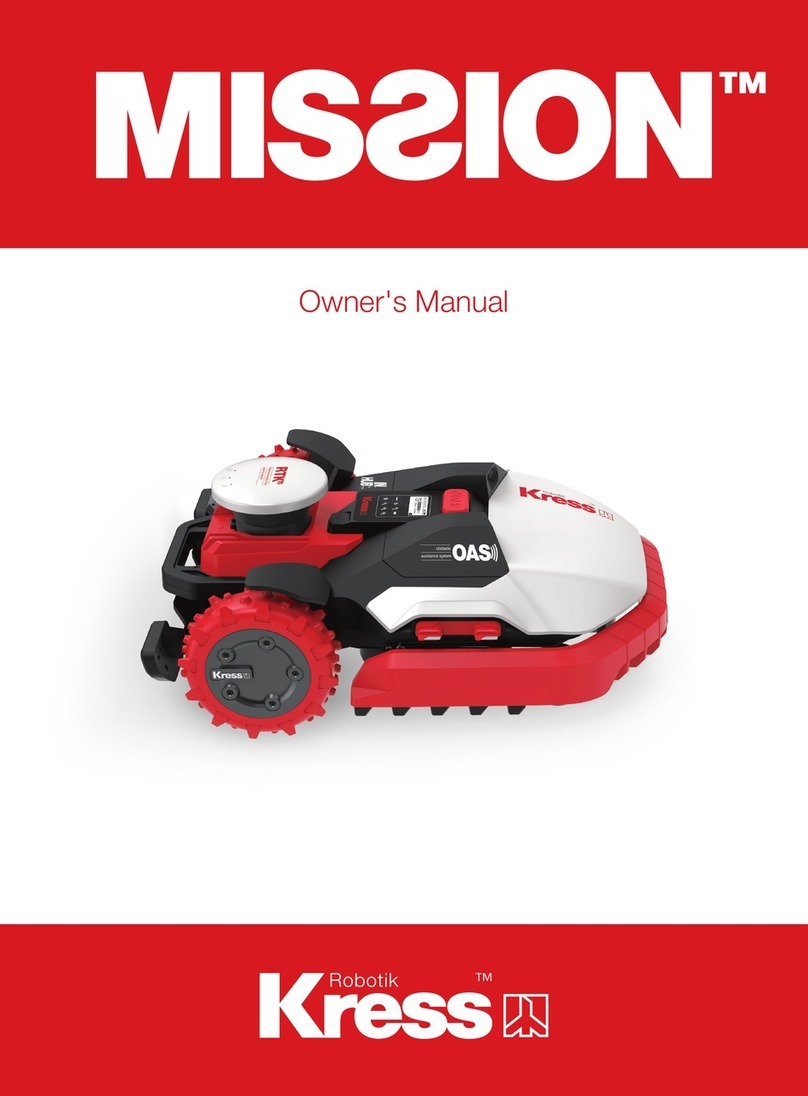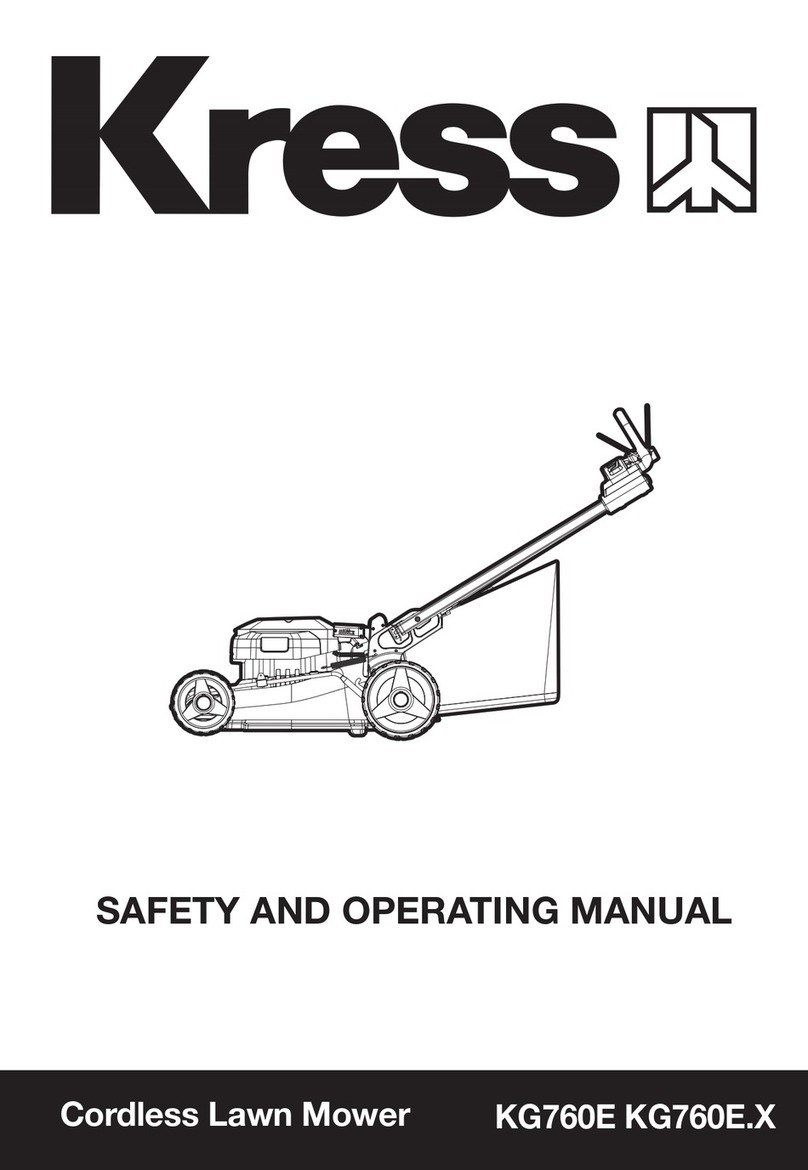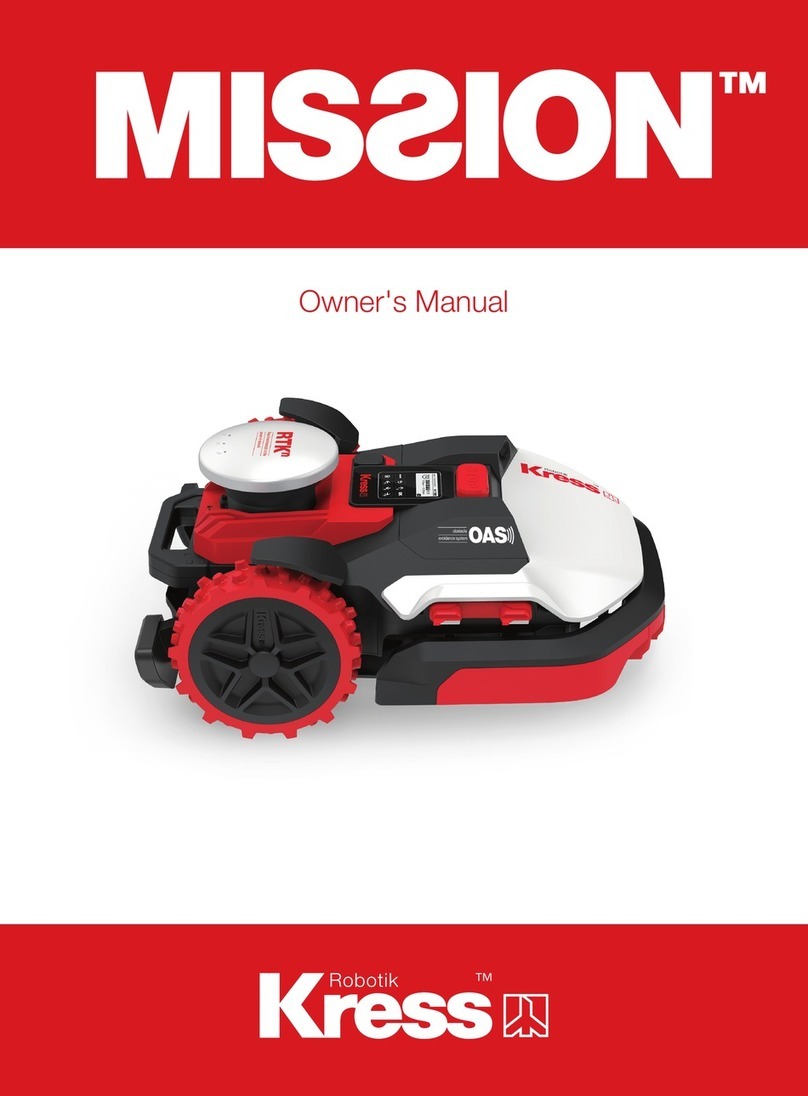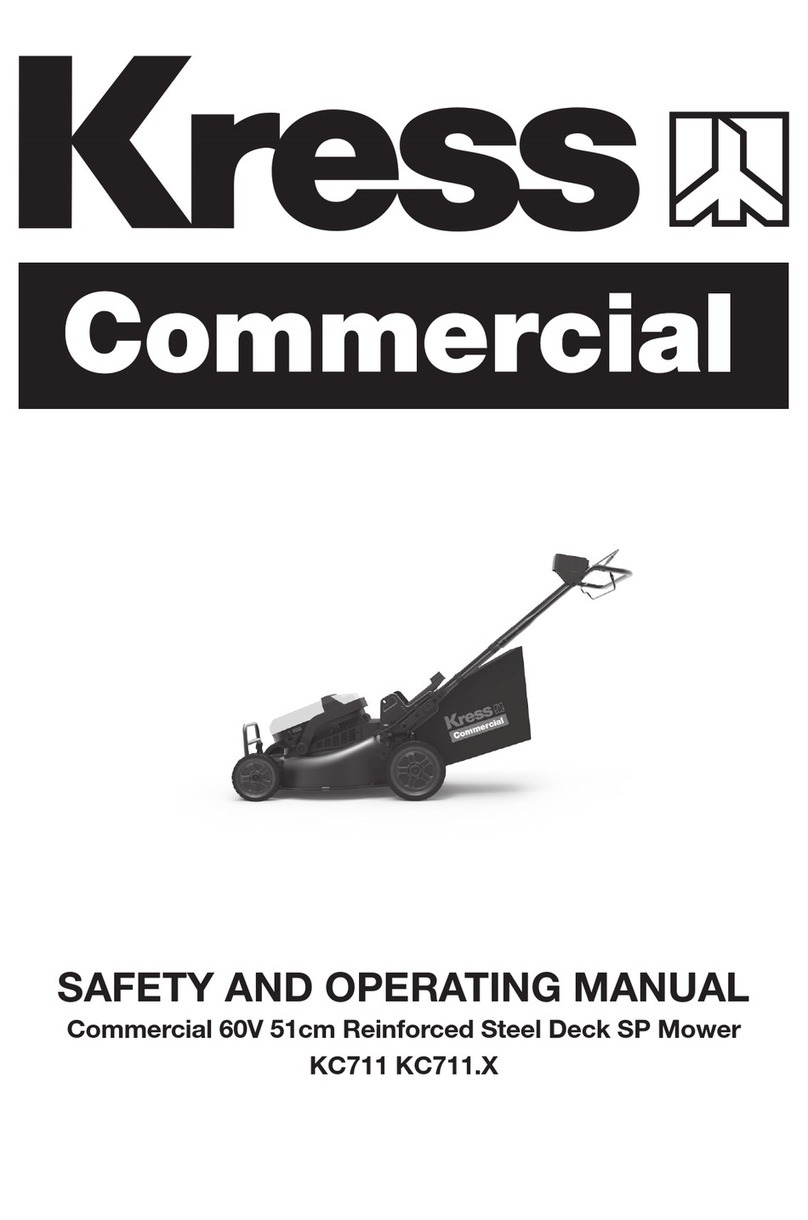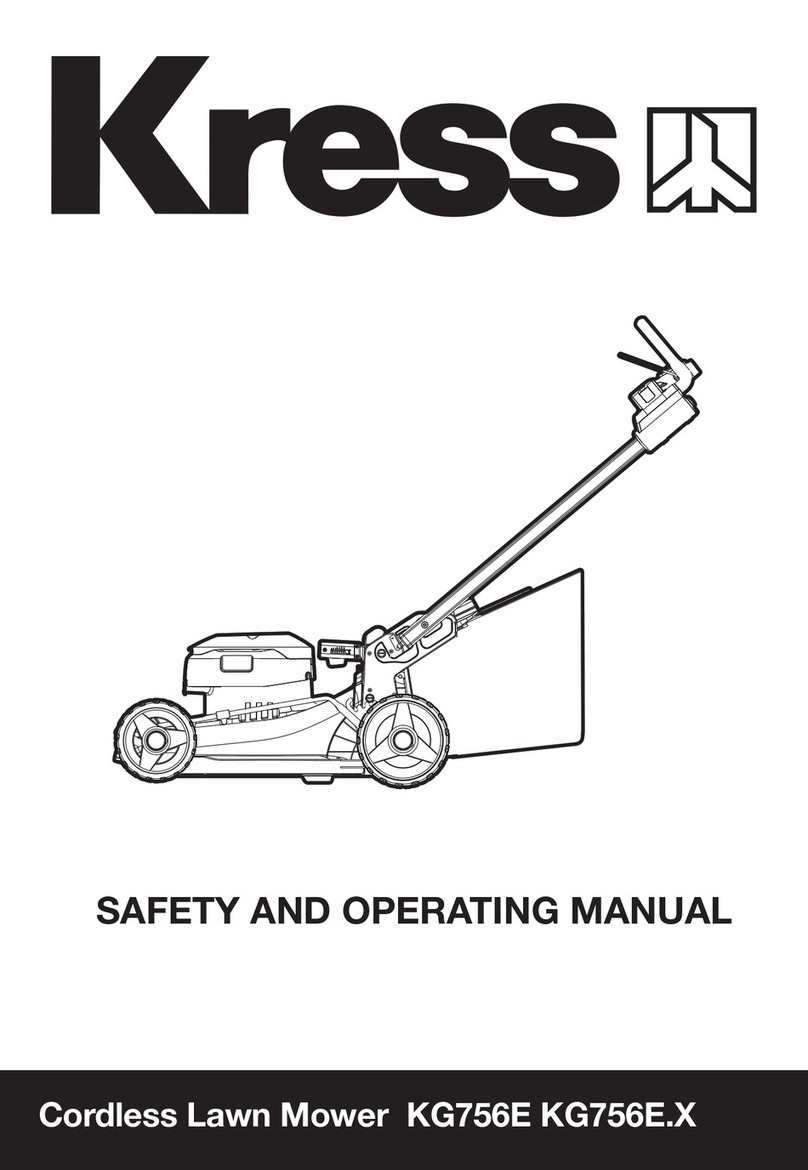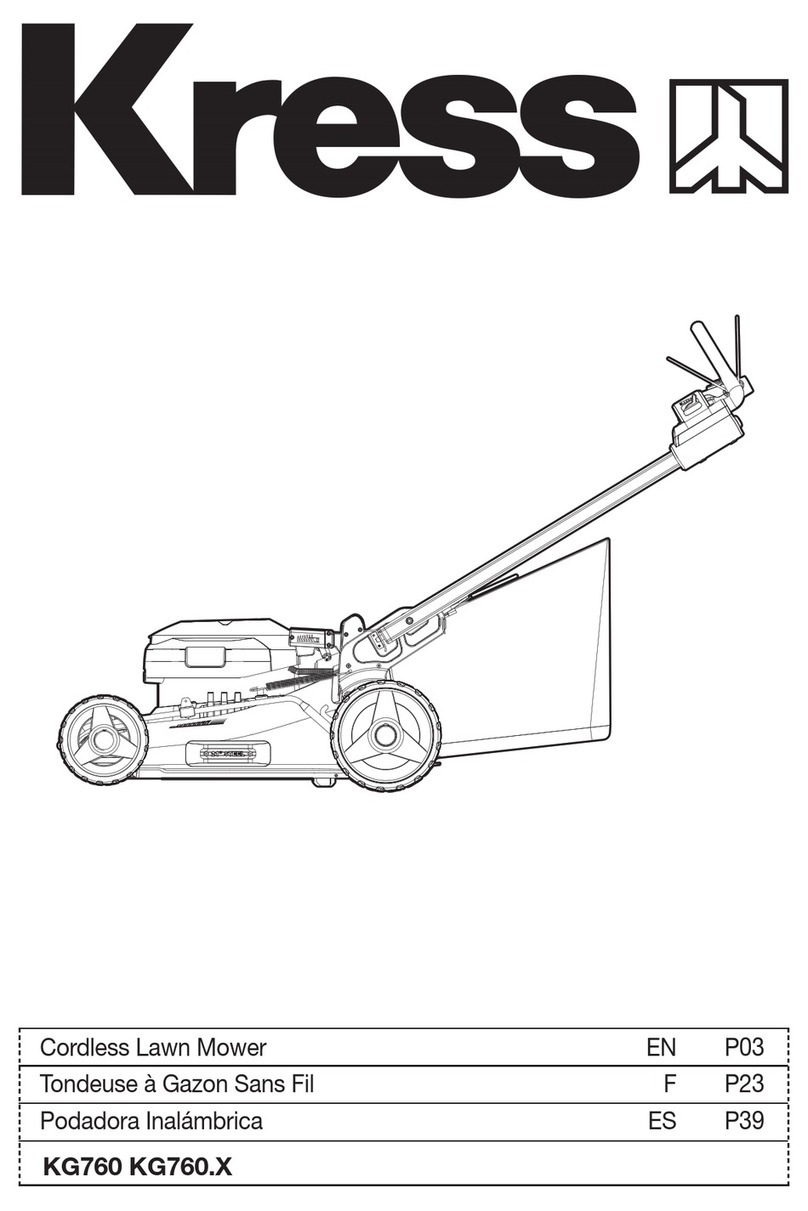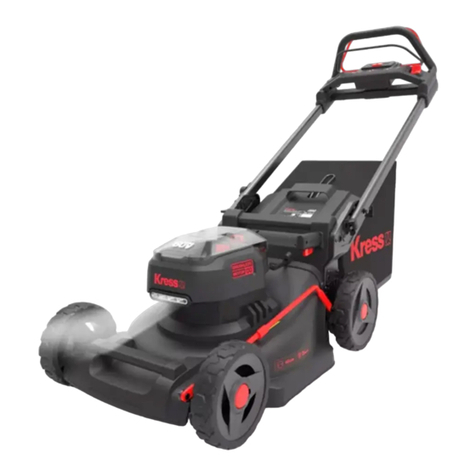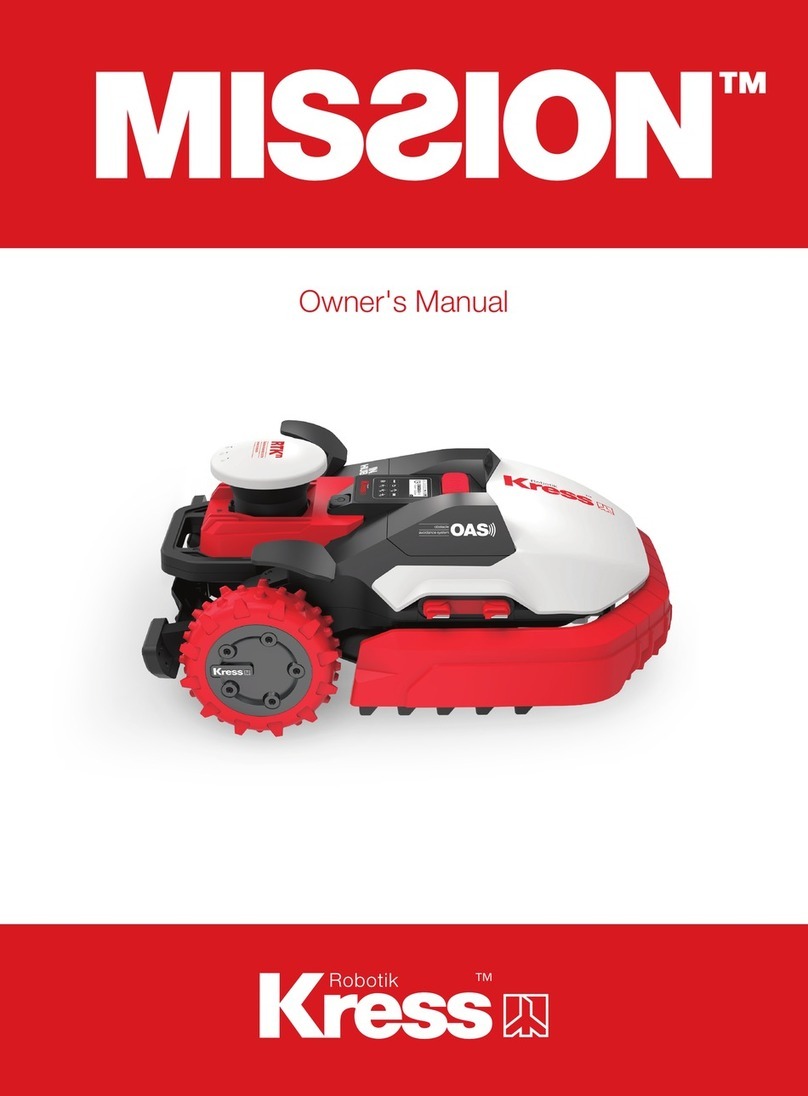
8
If damaged, have the power tool repaired
before use.
Many accidents are caused by
poorly maintained power tools.
f) Keep cutting tools sharp and clean.
Properly
maintained cutting tools with sharp cutting edges
are less likely to bind and are easier to control.
g) Use the power tool, accessories and tool bits
etc. in accordance with these instructions,
taking into account the working conditions
and the work to be performed.
Use of the
power tool for operations different from those
intended could result in a hazardous situation.
h) Keep handles and grasping surfaces dry,
clean and free from oil and grease.
Slippery
handles and grasping surfaces do not allow
for safe handling and control of the tool in
unexpected situations.
5) Battery tool use and care
a) Recharge only with the charger specified by
the manufacturer.
A charger that is suitable for
one type of battery pack may create a risk of re
when used with another battery pack.
b) Use power tools only with specifically
designated battery packs.
Use of any other
battery packs may create a risk of injury and re.
c) When battery pack is not in use, keep it away
from other metal objects, like paper clips,
coins, keys, nails, screws or other small metal
objects, that can make a connection from
one terminal to another.
Shorting the battery
terminals together may cause burns or a re.
d) Under abusive conditions, liquid may be
ejected from the battery; avoid contact. If
contact accidentally occurs, flush with water.
If liquid contacts eyes, additionally seek
medical help.
Liquid ejected from the battery
may cause irritation or burns.
e) Do not use a battery pack or tool that is
damaged or modified.
Damaged or modied
batteries may exhibit unpredictable behaviour
resulting in re, explosion or risk of injury.
f) Do not expose a battery pack or tool to fire
or excessive temperature.
Exposure to re or
temperature above 130 °C may cause explosion
.
g) Follow all charging instructions and do not
charge the battery pack or tool outside
the temperature range specified in the
instructions.
Charging improperly or at
temperatures outside the specied range may
damage the battery and increase the risk of re.
6) Service
a) Have your power tool serviced by a
qualified repair person using only identical
replacement parts.
This will ensure that the
safety of the power tool is maintained.
b) Never service damaged battery packs.
Service
of battery packs should only be performed by the
manufacturer or authorized service providers.
Safety instructions for edgers
1. Training
a) Read the instructions carefully. Be familiar
with the controls and the proper use of the
equipment.
b) Never allow children or people unfamiliar with
these instructions to use the edger. Local
regulations may restrict the age of the operator.
c) Never edge while people, especially children, or
pets are nearby.
d) Keep in mind that the operator or user is
responsible for accidents or hazards occurring
to other people or their property.
2. Preparation
a) While edging, always wear eye and ear
protection, substantial foot wear, and long
trousers.
b) Thoroughly inspect the surface where the
equipment is to be used and remove all stones,
sticks, wires, bones and other foreign objects.
c) Before using, always visually inspect to see that
the blades, blade bolts and cutter assembly
are not worn or damaged. Replace worn or
damaged blades and bolts in sets to preserve
balance.
d) Use only manufacturer-recommended
replacement parts and accessories.
3. Operation
a) Edge only in daylight or in good artificial light.
b) Always be sure of your footing on slopes.
c) Walk, never run.
d) Use extreme caution when reversing or pulling
the edger toward you.
e) Make sure the blade has stopped before
crossing surfaces other than grass and when
transporting the edger to and from the area to
be edged.
f) Never operate the edger with defective, missing
or incorrectly fitted guards.
g) Switch on the motor carefully according to
instructions and with feet well away from the
blade(s).
h) Do not tilt when switching on the motor,
unless the edger has to be tilted for starting.
In this case, do not tilt it more than absolutely
necessary and lift only the part which is away
from the operator.
i) Do not switch on the motor when a bystander is
standing in front of the blade(s).
j) Do not put hands or feet near or under rotating
parts.
k) Always switch off the electric motor and remove
battery pack from the machine:
1) before clearing blockages;
2) before checking, cleaning or working on the
blade(s);
3) after striking a foreign object: inspect the
blade(s) for damage and make repairs before
restarting and operating the edger;
4) if edger starts to vibrate abnormally (check
immediately).


